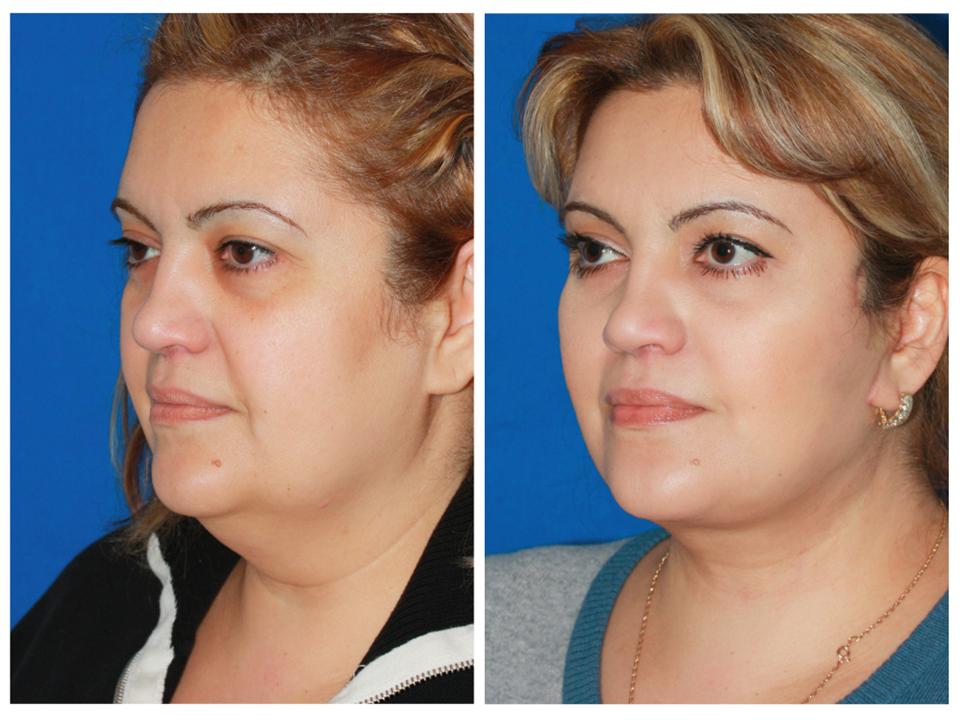Ever wondered what the facial liposuction recovery process entails? You’re in the right place. Facial liposuction can transform your appearance, but understanding the recovery journey for neck lift surgery is crucial. We’ll dive into what you can expect post-surgery, from swelling and bruising to the timeline of your healing process, especially for submental liposuction recovery and neck liposuction recovery. Knowing these details helps you prepare better for neck liposuction surgery and ensures a smoother recovery for the patient.
This guide will cover essential tips for managing discomfort during chin lipo recovery process, maintaining proper skincare after neck liposuction, and recognizing signs of complications in the week following chin liposuction recovery time. By the end of the week, you’ll have a clear picture of how to navigate your chin lipo recovery period effectively. Let’s get started on making your post-surgery experience, including your chin lipo week, as stress-free as possible.
Overview of Chin Liposuction Recovery
General Recovery
Chin liposuction recovery is generally quick. Most patients return to daily activities within a week after chin lipo. The procedure itself is minimally invasive. This means less trauma to the body and a faster healing process, especially after chin lipo, within a week.
Swelling and bruising are common right after surgery. These symptoms usually subside within a week. By the end of the first week, most swelling from chin lipo has reduced significantly.
Post-Operative Instructions
Following post-operative instructions is crucial for a successful chin lipo recovery week. Patients should wear a compression garment as directed by their surgeon for a week after chin lipo. This helps reduce swelling and supports proper healing.
Keeping the head elevated while sleeping can also speed up recovery after chin lipo, especially in the first week. Avoiding strenuous activities for at least two weeks after chin lipo is recommended. This prevents complications and ensures a smoother recovery process.
Minimal Invasiveness
Chin liposuction is a minimally invasive procedure. Small incisions are made under the chin or behind the ears for lipo, typically healing within a week. A thin tube called a cannula is used to remove fat deposits during chin lipo, which may require a week for recovery.
Due to its minimally invasive nature, chin liposuction carries low risk of complications and requires only a week for recovery. Infection, bleeding, and scarring are rare but possible risks. Adhering to proper aftercare reduces these risks significantly.
Healing Process
The neck liposuction healing process involves several stages. Initial recovery takes about one week. During this time, patients may experience some discomfort and tightness in the treated area after chin lipo for about a week.
Complete chin lipo recovery can take several weeks to months. Final results become noticeable as swelling continues to decrease over time after chin lipo, typically within a week. Patience is key during this period.
Importance of Aftercare
Proper chin liposuction recovery care cannot be overstated. Following all medical advice ensures optimal results and minimizes risks during the week after chin lipo. Regular follow-up appointments with the surgeon help monitor progress and address any concerns, especially after chin lipo, week by week.
Taking prescribed medications as directed aids in pain management, chin lipo recovery, and infection prevention throughout the week. Keeping incision sites clean and dry promotes faster healing.
Initial Recovery Timeline
First Few Days
The first 3-4 days post-surgery are critical. Patients will experience initial swelling, discomfort, and bruising. It is essential to follow the surgeon’s instructions during this week after chin lipo. Keeping the head elevated can help reduce swelling. Ice packs can also be used to minimize discomfort.
Pain medication prescribed by the doctor after chin lipo should be taken as directed for a week. Avoid strenuous activities to prevent complications. Rest is crucial for proper healing.
First Week
By the end of the first week, patients often notice a reduction in swelling after chin lipo. This is a significant milestone in the recovery process. Many people feel well enough to return to work or resume light activities within a week after chin lipo.
It is important to continue following post-operative care instructions for chin lipo this week. Regular follow-up appointments with the surgeon ensure that healing from chin lipo is progressing as expected each week. Any concerns should be addressed immediately to avoid setbacks.
Two-Week Mark
At the two-week mark, most lipo patients see significant healing and contouring effects. Swelling continues to decrease, revealing more defined facial features. Bruising usually fades by this time.
Patients should still avoid heavy lifting and intense physical activities for a week after lipo. Normal routines can generally be resumed with caution. Adhering to post-operative guidelines remains crucial for optimal results after lipo during the first week.
Long-Term Care
While initial recovery from lipo happens quickly, full results may take several months to become apparent. Maintaining a healthy lifestyle supports long-term outcomes. Follow-up appointments help monitor progress and address any lingering issues.
Proper skin care and avoiding exposure to extreme temperatures can aid in maintaining lipo results. Any concerns about healing or appearance after lipo should be discussed with the surgeon promptly.
Managing Pain and Swelling
Pain Relief
Patients often experience discomfort after facial liposuction. Prescribed medications can help manage this pain. Surgeons usually recommend taking these medications as directed. Over-the-counter pain relievers like acetaminophen may also be used. Avoid aspirin or ibuprofen as they can increase bruising.
Reducing Swelling
Swelling is common after surgery. Using ice packs can reduce it significantly. Apply ice for 20 minutes, then take a break for 20 minutes. Repeat this process during the first 48 hours post-surgery. Cold compresses are also effective.
Rest and Elevation
Resting is crucial for recovery. Keeping the head elevated minimizes swelling. Use extra pillows to prop up the head while sleeping. This position helps fluid drain away from the face.
Managing Bruising
Bruising often accompanies swelling. It usually appears around the chin and jawline areas. Bruises may initially look dark but will fade over time. Applying arnica cream can help speed up the healing process.
Wearing a Headwrap
Surgeons often recommend wearing a headwrap after surgery. This garment supports the skin’s elasticity and helps reduce residual swelling. Wear it as instructed by the plastic surgeon.
Monitoring Incisions
Incisions should be kept clean to prevent infection. Follow the plastic surgeon’s instructions for cleaning them. Avoid touching the incisions with dirty hands.
Returning to Work
Most patients can return to work within a week. However, some residual swelling might still be present. It’s important to avoid strenuous activities during this time.
Long-term Care
Recovery continues beyond the initial weeks. The body needs time to adjust to changes in fat distribution. Final results become visible as swelling subsides completely.
Compression Garment Use
Role of Headwrap
The headwrap plays a crucial role in facial liposuction recovery. It supports the healing process by maintaining the contour of the face. This helps to ensure that the new shape remains intact.
Swelling is a common issue after surgery. The headwrap helps reduce swelling by applying consistent pressure. This pressure minimizes fluid buildup, which can cause puffiness.
Wearing Duration
Surgeons typically advise wearing the compression garment for several weeks. The exact duration depends on individual cases. Most patients need to wear it continuously for the first week.
After that, they may only need to wear it at night. Following the surgeon’s advice is essential for optimal recovery. Ignoring this guidance can lead to complications.
Healing Acceleration
Proper use of the compression garment can speed up healing. Consistent pressure helps tissues adhere correctly. This reduces the risk of irregularities and improves overall results.
Patients who follow their surgeon’s instructions often see quicker improvement. They experience less discomfort and achieve better final outcomes.
Improved Results
Wearing the garment as directed enhances results. It ensures that the skin tightens properly around the new contours. This leads to smoother, more natural-looking results.
Neglecting to wear the garment can result in uneven healing. Patients might notice lumps or bumps if they don’t follow instructions carefully.
Activity Restrictions Post-Op
Heavy Lifting
Avoid heavy lifting after facial liposuction. This includes lifting weights, carrying heavy bags, or moving furniture. Strenuous activities can increase swelling and disrupt the healing process.
Most surgeons recommend avoiding heavy lifting for at least four weeks. This period allows the body to heal properly without added stress.
Exercise
Exercise should be limited post-op. Walking is generally safe and encouraged to promote circulation. However, avoid intense workouts like running or aerobics.
Light exercises can usually be resumed after two weeks. More strenuous exercise should wait until four to six weeks post-surgery. Always consult with your surgeon before restarting any workout routine.
Daily Activities
Daily activities need to be adjusted during recovery. Simple tasks like cooking or light cleaning are usually fine after the first week. However, avoid bending over or any activity that puts pressure on the face.
Returning to work depends on the job’s physical demands. Desk jobs may be resumed within a week, while more physically demanding jobs may require up to two weeks off.
Following Surgeon’s Instructions
Following specific instructions from your surgeon is crucial for a smooth recovery. Each patient’s situation is unique, and the surgeon’s guidance will be tailored to your needs.
Ignoring these instructions can lead to complications like infection or prolonged swelling. Always ask questions if you’re unsure about any activity restrictions.
Scar Healing and Care
Scarring Tips
Minimizing scar visibility is essential. Silicone patches can help. They keep the skin moist and reduce scar tissue formation. Avoid direct sun exposure. The sun can darken scars, making them more noticeable.
Skin Elasticity
Skin elasticity plays a role in healing. Staying hydrated helps maintain your skin’s elasticity. Drink plenty of water each day. Hydrated skin heals faster and better.
Incision Care
Proper incision care is crucial. Follow your surgeon’s instructions closely. This prevents infection and ensures minimal scarring. Clean the area as directed and use prescribed ointments.
Healthy Lifestyle
A healthy lifestyle supports recovery. Eat a balanced diet rich in vitamins and minerals. These nutrients aid in skin repair. Exercise moderately to improve blood circulation. Good circulation helps deliver nutrients to the healing skin.
Sun Protection
Protecting your skin from the sun is vital. Use sunscreen with high SPF when going outside. Wear hats or scarves to shield your face. This prevents scars from becoming darker and more prominent.
Elite Facial Plastic Surgery
Elite facial plastic surgery techniques focus on reducing visible scars. Surgeons make incisions in natural creases or less visible areas. This approach minimizes noticeable scarring.
Real-Life Example
Consider Sarah, who had facial liposuction in 2022. She followed her surgeon’s advice on incision care and used silicone patches. She also avoided the sun for several months post-surgery. Her scars are now barely noticeable.
Viewing Results Timeline
Initial Days
In the first few days after facial liposuction, patients will notice swelling and bruising. This is a normal part of the healing process. The swelling might make it hard to see the immediate results. Keeping the head elevated can help reduce swelling.

First Week
By the end of the first week, some initial improvements might be visible. Swelling will start to go down. Bruising will begin to fade. Patients might feel tightness in their skin. This tightness is a sign that skin tightening is starting to take effect.
Two Weeks
At two weeks, more significant changes become noticeable. Swelling continues to decrease. Skin starts adapting to its new contours. Patients should start seeing a clearer outline of their face and chin area.
Three to Four Weeks
Full results may take up to three to four weeks. By this time, most of the swelling should be gone. The skin should have tightened around the new shape of the face. Final results will be more apparent, showing a smoother and more defined facial structure.
Following Up
Patients should follow up with their board-certified surgeon during recovery. Regular check-ups ensure everything is healing correctly. Surgeons might take pictures to track progress over time. These images can provide a visual record of improvement.
Long-Term Maintenance
Long-term results depend on maintaining a healthy lifestyle. A balanced diet and regular exercise can help keep the new facial contours intact. It’s also important to follow any specific advice from your surgeon for long-term care.
Addressing Potential Complications
Common Complications
Facial liposuction recovery can come with complications. Infection is one of the most common issues. Patients might notice redness, warmth, or pus around the incision site. Asymmetry in facial contour can occur if fat removal is uneven. Excessive swelling lasting more than a few weeks is another sign of complications.
Recognizing Signs
Recognizing these signs early is crucial. Redness and warmth indicate infection. Uneven facial appearance points to asymmetry. Persistent swelling beyond the expected recovery period should raise concerns. Patients must monitor these symptoms closely.
Immediate Communication
Immediate communication with the surgeon is vital if any signs of complications arise. Surgeons need to know about infections right away to prescribe antibiotics. Asymmetry might require further consultation and possible correction. Swelling that doesn’t subside needs medical attention to rule out other issues.
Low Risk of Severe Complications
Severe complications are rare when patients follow post-op instructions closely. Infection rates drop significantly with proper wound care. Asymmetry can be minimized by choosing an experienced surgeon and following their guidelines. Swelling usually decreases over time with rest and care.
Following Post-Op Instructions
Following post-op instructions helps reduce risks. Patients should:
-
Keep the incision area clean.
-
Avoid strenuous activities.
-
Wear compression garments as advised.
These steps ensure better healing and minimize complications.
Importance of Follow-Up Visits
Follow-up visits are essential during recovery. They allow surgeons to monitor progress and address any issues early on. Patients should not skip these appointments even if they feel fine.
Emotional Impact
Complications can have an emotional impact on patients. Anxiety about appearance or long-term results is common. Open communication with healthcare providers helps manage these feelings.
Tips for Enhanced Recovery
Hydration and Diet
Staying hydrated is crucial. Drink plenty of water each day. It helps flush out toxins and reduces swelling. A balanced diet also supports healing. Eat fruits, vegetables, lean proteins, and whole grains. These foods provide essential nutrients.
Gentle Activities
Light activities promote blood circulation. Gentle walks are good. Avoid strenuous exercises that could cause injury. Gradually increase activity levels as you heal. Listen to your body and rest when needed.
Patience and Positivity
Recovery times vary for everyone. Be patient with yourself. A positive mindset aids recovery. Remember, gradual improvement is normal after facial liposuction. Celebrate small milestones along the way.
Summary
Recovering from facial liposuction can be smooth if you follow the right steps. From managing pain and swelling to using compression garments, each stage is crucial for optimal healing. Stick to activity restrictions and care for your scars to see the best results.
Keep an eye on potential complications and use our tips for a faster recovery. Your journey to a refined look requires patience and diligence. Ready to enhance your recovery experience? Follow these guidelines for the best outcome.
Frequently Asked Questions
How long does it take to recover from chin liposuction?
Initial recovery usually takes about 1-2 weeks. Full recovery can take up to 3 months.
What can I do to manage pain and swelling after chin liposuction?
Use prescribed pain medications and apply cold compresses. Keep your head elevated.
When should I start wearing a compression garment post-op?
Wear a compression garment immediately after surgery, as advised by your surgeon.
Are there any activity restrictions after chin liposuction?
Avoid strenuous activities for at least 2 weeks. Stick to light walking.
How can I care for scars after chin liposuction?
Keep the incision area clean and moisturized. Use silicone sheets or gels as recommended.
When will I see the final results of my chin liposuction?
You may see initial results in 1-2 weeks. Final results are visible around 3 months post-op.
What should I do if I experience complications after chin liposuction?
Contact your surgeon immediately if you notice signs of infection, excessive swelling, or unusual pain.





